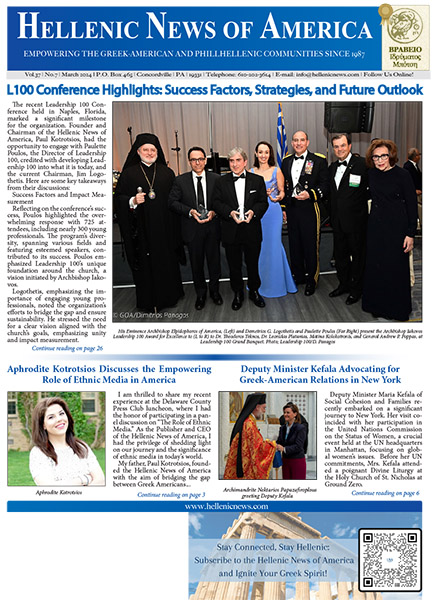By Catherine Tsounis
“China Maritime Silk Road Antiques Photo Exhibition” was held from December 15th to 20th, 2014, on the first floor of the United Nations Headquarters in New York City. The host was the Permanent Mission of the People’s Republic of China to the United Nations. The organizer was the Fujian Provincial People’s Government and jointly sponsored by the Fujian Provincial Department of Culture, the Foreign Affairs Office of Fujian Province, and the Fujian Museum. Co-organizers included the Nanjing Museum, the Zhejiang Provincial Museum, the Shandong Provincial Museum, the Guangdong Provincial Museum, and the Museum of the Guangxi Zhuang Autonomous Region, the Hainan Museum, and U.S.-based ICN Television Network.
“The Maritime Silk Road also served as a “Road of Peace” that connected the ancient civilizations of both the East and the West by sea and served as a platform for the exchanges of both art and culture on the basis of trade and commerce. With its far-reaching and extensive content, the Maritime Silk Road has facilitated and influenced tremendously the process of world civilizations. Ancient traders coming from China, India, Arabia, Egypt Rome, Greece and other nations had been committed to exploit this maritime trade routes,” according to the brochure “The long voyage”. Fujian province was the birthplace of the concept.
“After Alexander the great conquered the Persians, he established the city of Alexandria Eschate in 339 BCE in the Fergana Valley of Neb (modern Tajikistan),” according tohttps://www.ancient.eu/Silk_Road/. “Leaving behind his wounded veterans in the city, Alexander moved on. In time, these Macedonian warriors intermarried with the indigenous populace creating the Greco-Bactrian culture which flourished under the Seleucid Empire following Alexander’s death. Under the Greco-Bactrian king Euthydemus I (260-195 BCE) the Greco-Bactrians had extended their holdings. According to the Greek historian Strabo (63-24 CE) the Greeks “extended their empire as far as the Seres” (xi.ii.i). `Seres’ was the name by which the Greeks and Romans knew China, meaning `the land where silk came from’. It is thought, then, that the first contact between China and the west came around the year 200 BCE.”
In the article “BYZANTINE SILK: SMUGGLING AND ESPIONAGE IN THE 6TH CENTURY CE” , A delegation of eastern orthodox monks under Justinian broke two monopolies in the East – China on silk production and Persia on the silk trade routes to the West – by smuggling silkworms to the West, ensuring new Western silk production. This change made silk more accessible and less prohibitively expensive in the West by installing Byzantium as a new source for silk, which removed the middlemen in the cost equation,( https://altmarius.ning.com/profiles/blogs/byzantine-silk-smuggling-and-espionage-in-the-6th-century-ce).
The article’s conclusion is that ”this one 6th century event changed the course of history in how several silk monopolies in China and Persia were broken through industrial espionage and smuggling by the Byzantine world to set up a competing silk monopoly in the relative West. Because they were likely to know they were being watched by or sought by different suspicious groups en route, the Byzantine priestly spies were likely to have returned with their smuggled silkworms and potted mulberry shrubs by the northernmost route in order to avoid Sassanian interception, coming back to Constantinople at least two years after their initial setting out form Byzantium. We may never if these priest spies were fully publicly acknowledged and justly and amply rewarded by Justinian and the imperial court for the risks they took, especially if they were austere types who were unlikely themselves to personally wear this most luxurious fabric at a time when silk was gold.”
Empress Irene of Athens (752-803 A.D.) expanded the Silk Trade, according to https://www.womeninworldhistory.com/silk-road-12.html. Irene saw the enormous economic value of the Byzantine silk production. Like China in the past, she remained determined to keep its control firmly within the Byzantine sphere by creating large imperial controlled industries. To support these industries, Irene built a new palace called the Eleutherios located in the center of the city near the commercial port. The silk-weaving shops built around it were tightly monitored by the state with imperial guilds in charge of them.
The “China Maritime Silk Road Antiques Photo Exhibition” is a remembrance of China’s everlasting influence on the West. Alexander the Great’s successors in the Greco-Bactrian Empire, Justinian and Empress Irene the Athenian expanded the Silk trade to the west through Constantinople of the Byzantine Empire.
Links:
https://www.ancient.eu/Silk_Road/- First contact with West through Alexander the Great’s successors.
https://traumwerk.stanford.edu/philolog/2011/08/byzantine_silk_smuggling_and_e.html –
Silk Road map
https://altmarius.ning.com/profiles/blogs/byzantine-silk-smuggling-and-espionage-in-the-6th-century-ce – BYZANTINE SILK: SMUGGLING AND ESPIONAGE IN THE 6TH CENTURY CE
https://en.wikipedia.org/wiki/Byzantine_silk
https://traumwerk.stanford.edu/philolog/2011/08/byzantine_silk_smuggling_and_e.html
Photo – Kay Wang, Secretary of America Hairong (International) Culture Development Company from left to right), friends, Irene Cheung, President of Key Luck Club (3rd from left), Ms. Yueying Wang, Executive Vice President of World Overseas Fujianese Cultural Exchange Association (4th from left), exhibit organizers and Mr. Zi Kuo Zhang, President of American Fujian Houyu Association at exhibition Opening.







